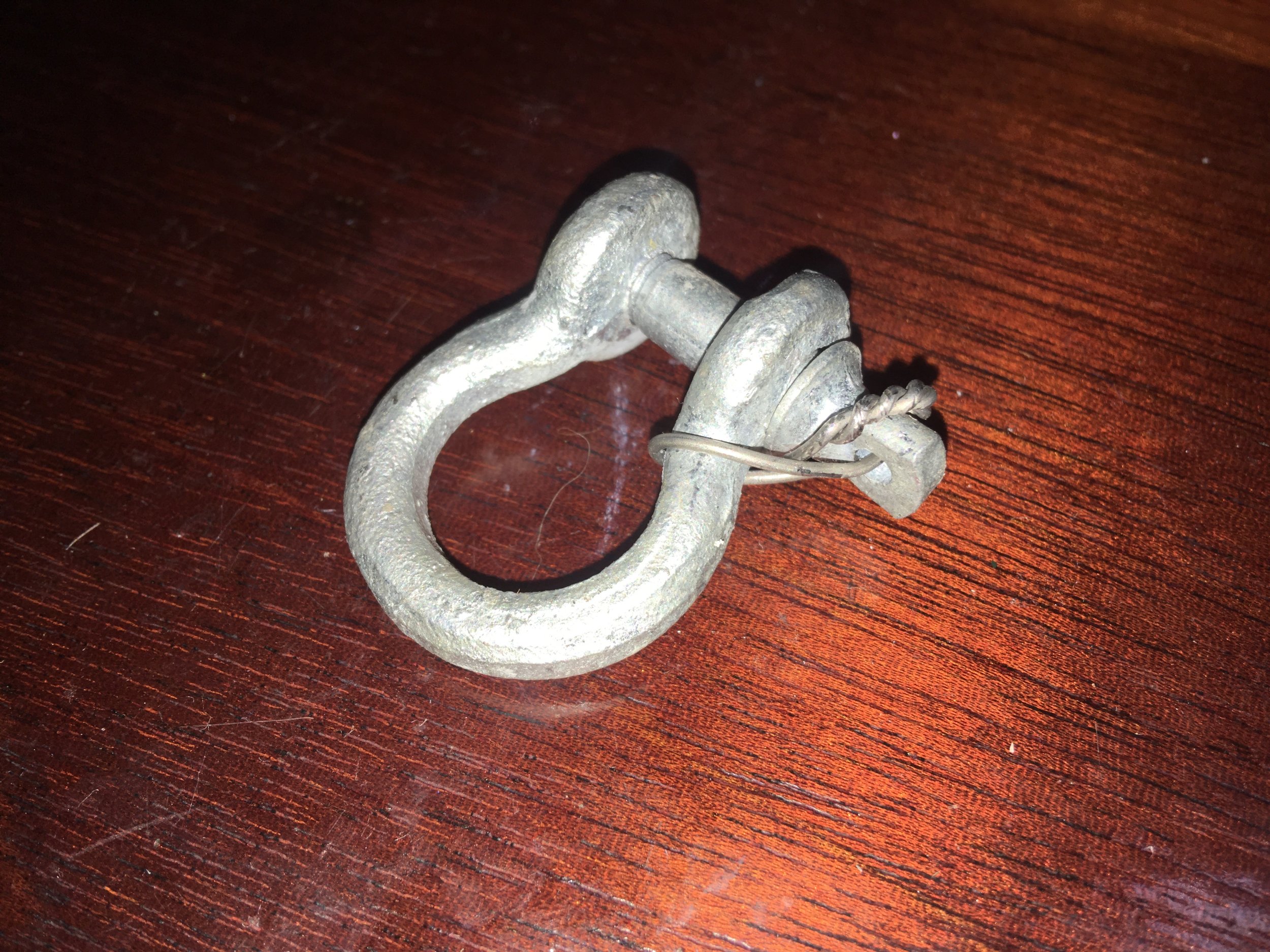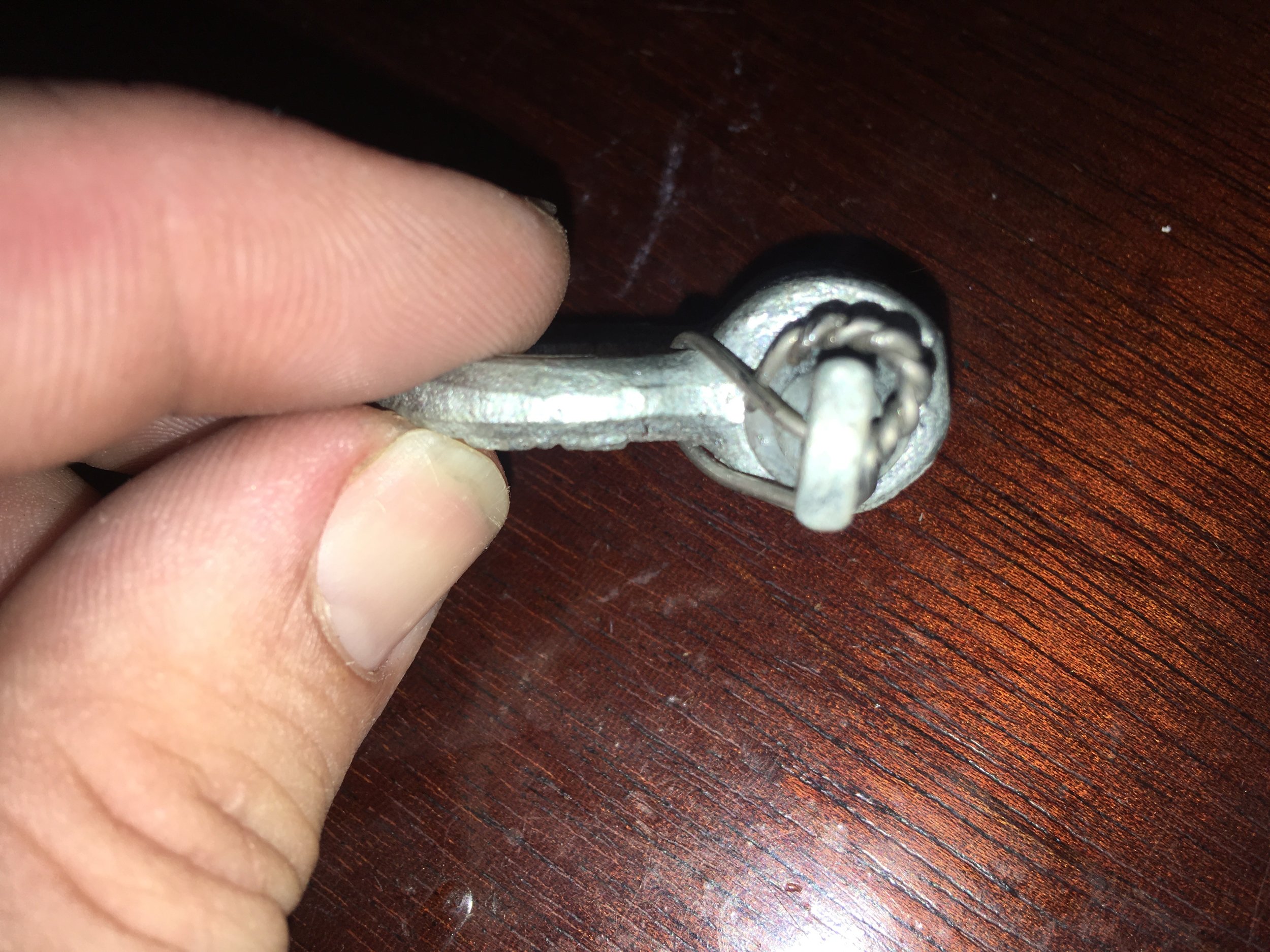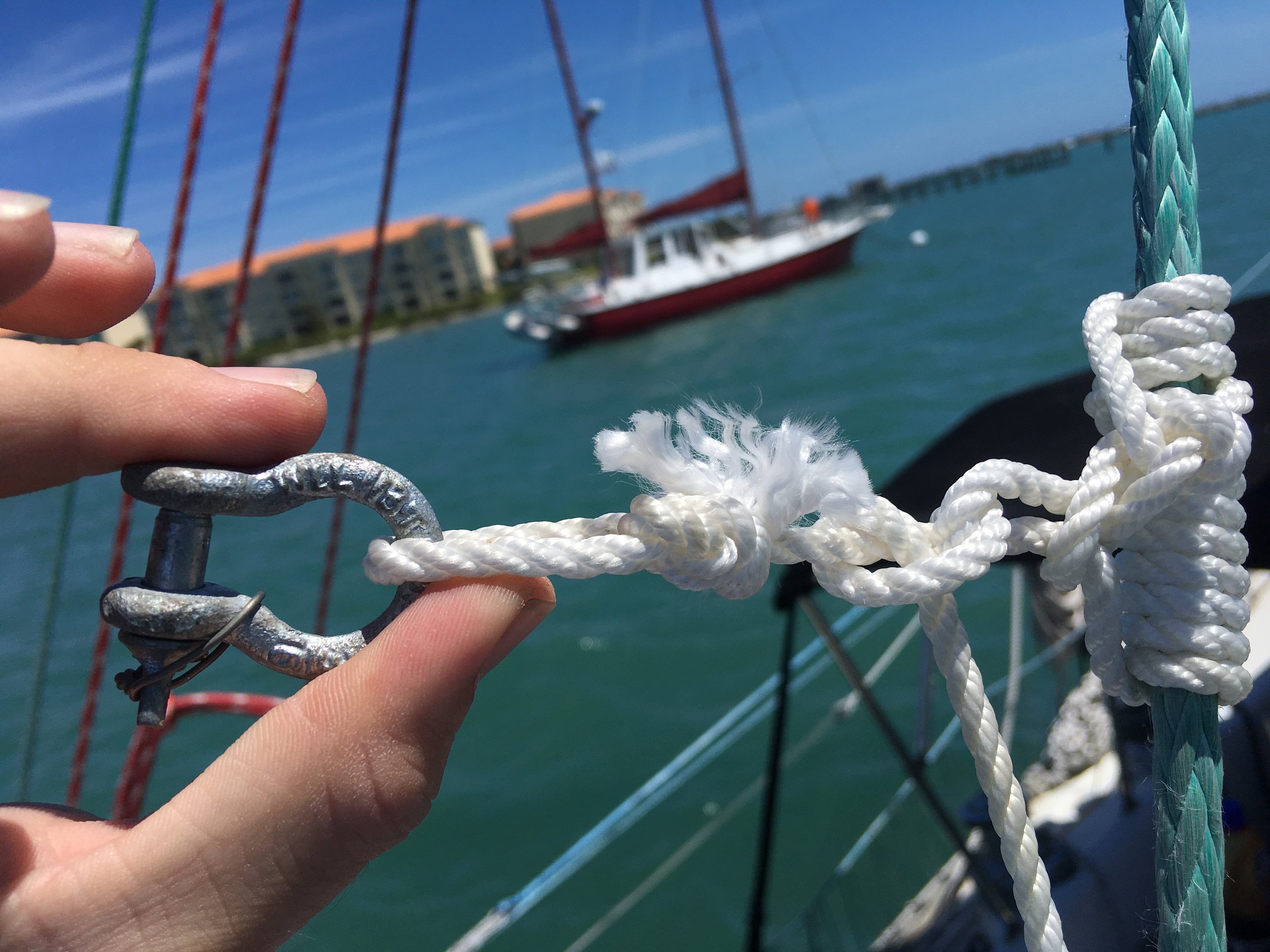Yes, if you need to stop in a hurry, you could drop the bow anchor and cleat it off. The problem is this would require that you run up to the bow and drop said anchor while in a moment of panic where every second counts!
Having a stern anchor that is set and ready to deploy is very important because it can be released from the cockpit, where you are while at the helm. This allows you to quickly drop the anchor while never leaving the helm.
Ok, so a stern anchor is wonderful, but where do you install one? We carry our stern anchor in a PVC pipe that is lashed to the stern pulpit. It works and can be deployed relatively quickly, but not as easily as we would wish it to be. After it has been released, there is still the issue of recovering the anchor, which is anything but easy with the pipe! This all leads to the seldom deployment of our stern anchor and the fact that if we really needed to deploy it in a hurry, we would fail.
To make our lives easier, we decided to build a proper anchor roller for our stern anchor. This will go mounted on the aft deck and be supported by a stanchion that wil take up the vertical loads. The roller will hold the anchor out and off the stern of the boat, ready to deploy and easy to recover, without causing damage to our transom.
Making a stern roller is rather easy, all you need is a piece of wood and a roller. I used a small roller that I was able to purchase on sale for $20 and through bolted it to a massive piece of oak. Oak is a very strong wood that will easily withstand the loads. Wood gives you the flexibility to design and position the anchor as far from the transom as needed to prevent the flukes from digging into your topsides.
You can buy long stainless steel anchor rollers that would negate the need for a massive piece of wood, but they are also ridiculously expensive! The only item that actually needs to be a roller is the portion that contacts the anchor, and this only occurs at the very end. The U shaped wood surrounding the roller will contact and hold the flukes of our FX-37 Fortress anchor, negating the need for any specially formed stainless steel anchor roller. The distance can be tailor fitted to meet the needs of your boat with wood, rather than being confined to the limited sizes available in pre-manufactured stainless steel units.
Stern anchor rollers are a compromise. Your boat was designed to carry an anchor at the bow and not on the stern. The more gear you add to your yacht, the less space you will have available to squeeze in an anchor roller. Figuring out where you can best fit a stern anchor will be tricky, and you might not ever find a perfect spot; but all you need is "good enough" as that will get your hook mounted on the stern. Once it is there, it will be at your disposal, allowing you to drop the emergency brake in a hurry or setup up a stern anchor to keep you from swinging.















